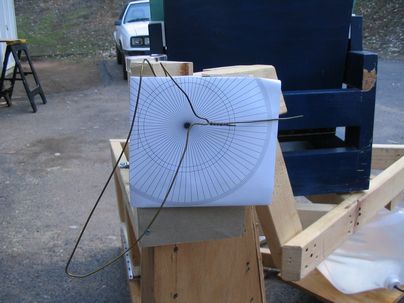The McCreary Mount Prototype
Here are some photographs of the McCreary Mount prototype under construction.
Two Major Components - Base and Platform
- Each is easily lifted by a single person
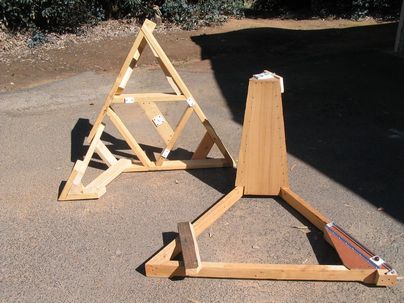
Platform Resting On Base
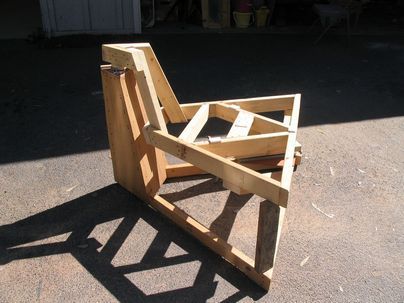
Close-Up of Upper Bearing
- Using 1" glass marbles temporarily during construction.
These will be replaced with 1" chrome steel balls,
grade 24 (accurate to 24 millionths of an inch)

Close-Up of Upper Bearing Support
- This adjustment allows for fine-tuning the East/West
angle of the polar axis
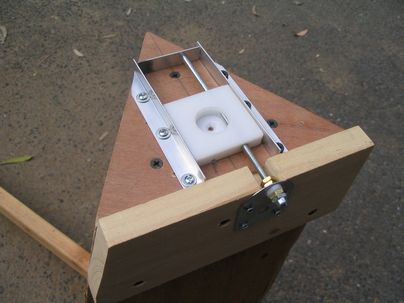
Close-Up of Lower Bearing Support
- This adjustment allows for a latitude range roughly
between San Diego and Boston (32 to 42 degrees)
as well as "fine-tuning" the polar axis altitude.
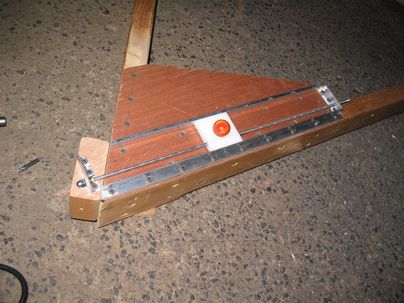
Preliminary Fluid Drive (Used for Testing)
- A 5-gallon water bag with adjustable output through
two finely adjustable drip irrigation valves.
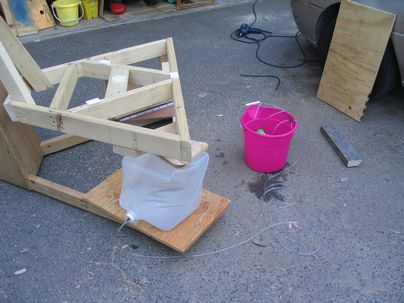
Extra Strong - It Holds a LOT of Weight!
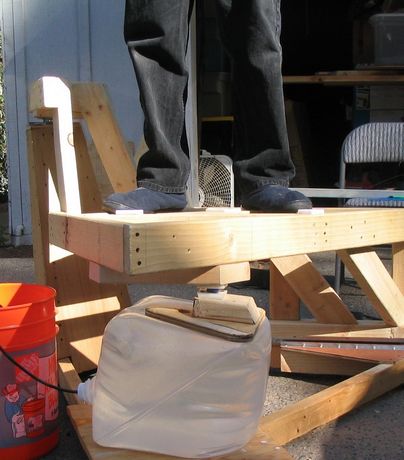
McCreary Mount With Scope Installed -
And Assistant! :)
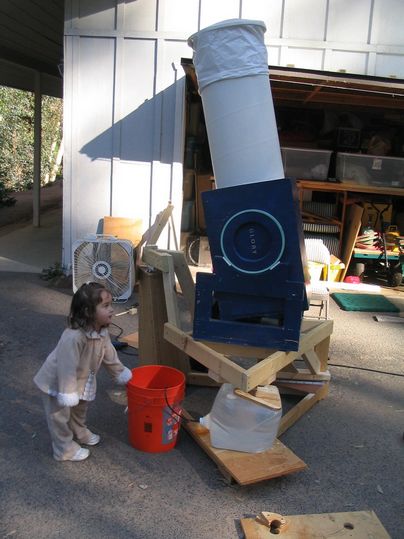
During Some Preliminary Testing
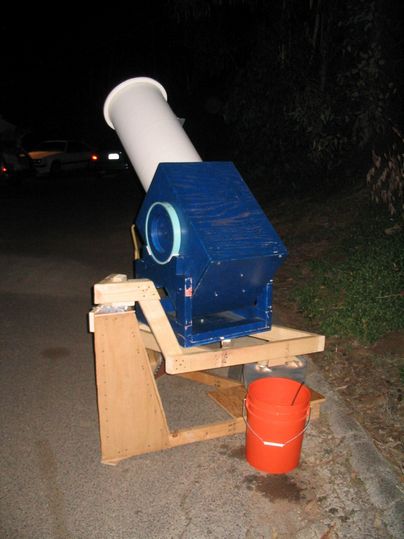
Movement Rate Measurement Experimental Setup
